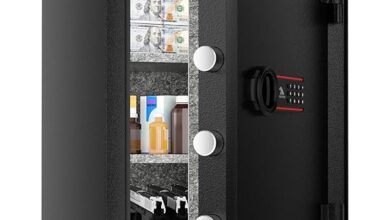Health Insurance Private Cost: Unveiling Hidden Expenses
The cost of private health insurance varies widely based on coverage, age, and location. Many factors, including plan type and deductibles, influence premiums.
Understanding the cost of private health insurance is crucial for budgeting and making informed choices about your healthcare. The prices reflect a diverse range of factors such as personal health, the level of coverage desired, the insurer’s pricing structure, and the geographic location where one resides.
Individual plans often cost more than group plans provided by employers due to the pooled risk. Age also plays a significant role, with older individuals typically paying higher premiums. Choosing the right deductible and co-payment amounts can make a noticeable difference in overall costs. It’s a balancing act between monthly premiums and out-of-pocket expenses for care and prescriptions. Navigating the insurance marketplace requires attention to these details to secure a plan that matches both health needs and financial constraints.
Understanding Basic Premiums
Health insurance premiums are influenced by a myriad of factors, including but not limited to, one’s age, location, and the type of plan chosen. Generally, the older one is, the higher the premiums due to increased health risks associated with aging. Geographical location also plays a critical role; premiums can vary significantly from state to state based on local regulation and the cost of living.
| State | Employer-Sponsored Premium | Individual Plan Premium |
|---|---|---|
| New York | $700 | $800 |
| California | $680 | $780 |
| Texas | $650 | $750 |
Comparing employer-sponsored and individual plans, typically, employer plans have lower premiums as the cost is shared between employer and employee and negotiated at group rates. Individual plans, on the other hand, are often more costly as they are not subsidized and the entire premium is paid by the individual.
Navigating Through Out-of-pocket Expenses
Understanding the specifics of out-of-pocket expenses is crucial when selecting a health insurance plan. Deductibles, an amount you pay before your insurance kicks in, directly influence your overall healthcare costs. A higher deductible generally means lower monthly premiums, but more expenses when accessing services.
Co-payments and coinsurance are additional costs to consider. Co-payments are fixed amounts paid for specific services or prescriptions at the time of service. Coinsurance is often a percentage of the covered service’s cost you pay after meeting your deductible.
Prescription drug costs can add significantly to out-of-pocket expenses. It’s vital to understand whether your prescriptions are covered, if there are generic alternatives, or if you need a special approval called prior authorization. Plans vary on coverage for medications, so comparing options before selecting one is imperative.
Additional Fees Beyond Standard Coverage
Understanding the cost spectrum of health insurance private plans is imperative for making more informed decisions. It’s not uncommon to encounter additional fees for elements not typically included within standard coverage. Specific non-covered treatments, such as certain alternative therapies or elective procedures, often accrue out-of-pocket expenses.
The financial implications can extend further when using out-of-network care providers. If preferred healthcare professionals are not part of an insurer’s network, the costs can increase significantly. Patients should scrutinize their provider network to avoid unexpected charges.
Moreover, individuals requiring specialized therapy or specialized medical equipment must prepare for additional expenditures. These items may not be fully funded by basic policies, necessitating higher personal investment. It’s crucial to review policy details or communicate with insurance support to clarify coverage scope for such specialized expenses.
The Reality Of Cost-sharing Mechanisms
Health Savings Accounts (HSAs) serve as a financial complement to High Deductible Health Plans (HDHPs), offering tax advantages to offset medical expenses. Contributions to HSAs are tax-deductible, earnings grow tax-free, and withdrawals for qualified medical expenses are not taxed. Eligibility for an HSA requires enrollment in an HDHP, encouraging consumers to become more conscientious about healthcare spending.
HDHPs often result in lower monthly premiums but require policyholders to pay more out-of-pocket costs before insurance takes over. Such plans are designed to stimulate cost-awareness and smarter choices in healthcare services. Coupling an HDHP with an HSA enables individuals to plan for these higher deductibles, using pre-tax dollars.
The concept of Maximum Out-Of-Pocket Limits sets a yearly threshold for an individual’s spending on covered healthcare services. After reaching these limits, insurance plans cover 100% of covered healthcare costs. This protects against catastrophic expenses and provides a safety net for policyholders, thereby making healthcare costs more predictable and manageable. Knowing the out-of-pocket maximum helps in financial planning and avoids unexpected burdens due to medical bills.
Strategies To Minimize Health Insurance Expenses
Shopping for Competitive Health Insurance Rates is a crucial step in reducing your healthcare expenditure. Comparing policies from various providers can lead to significant savings, as insurers often have differing premiums and coverage options. Employing online comparison tools streamlines this process, allowing for a quick evaluation of competitive rates tailored to your personal health and budgetary needs.
Understanding your healthcare needs is fundamental when Evaluating Plan Benefits vs. Cost. Opting for a plan with a lower premium might seem cost-effective, but it could lead to higher out-of-pocket expenses if it doesn’t cover essential services. It’s important to assess the balance between your monthly premium and potential medical costs to determine which plan presents the most value in the long run.
Exploring Tax Deductions and Credits Opportunities can further diminish the financial burden of health insurance. Many individuals are unaware of the tax incentives available for health insurance premiums, which can be leveraged to lower overall taxable income. Consulting a tax professional to understand eligibility for these benefits can result in considerable savings come tax season.

Credit: finmodelslab.com
Frequently Asked Questions Of Health Insurance Private Cost
How Much Is Health Insurance A Month For A Single Person In Us?
Health insurance costs for a single person in the US vary widely, averaging about $456 per month. Factors such as age, location, and plan type influence the specific monthly premium.
How Much Do People Spend On Private Health Insurance?
The average annual expenditure on private health insurance varies by plan type and coverage level, typically ranging from $3,000 to $7,000 per person.
Is $200 A Month A Lot For Health Insurance?
The cost of health insurance varies widely, but $200 a month could be reasonable depending on coverage, location, and your health needs. It’s important to compare plans to ensure the best value for your circumstances.
What’s The Best Private Health Insurance?
The best private health insurance varies based on personal needs, location, and budget. Research and compare plans for customized coverage that suits your healthcare requirements. Always check customer reviews and company ratings as well.
Conclusion
Navigating the costs of private health insurance can feel daunting. Yet, armed with the right information, choosing an affordable plan becomes simpler. Remember to compare rates, scrutinize coverage details, and consider factors unique to your health needs. By doing so, you’ll secure a policy that supports your well-being without breaking the bank.
Stay covered; stay healthy.








